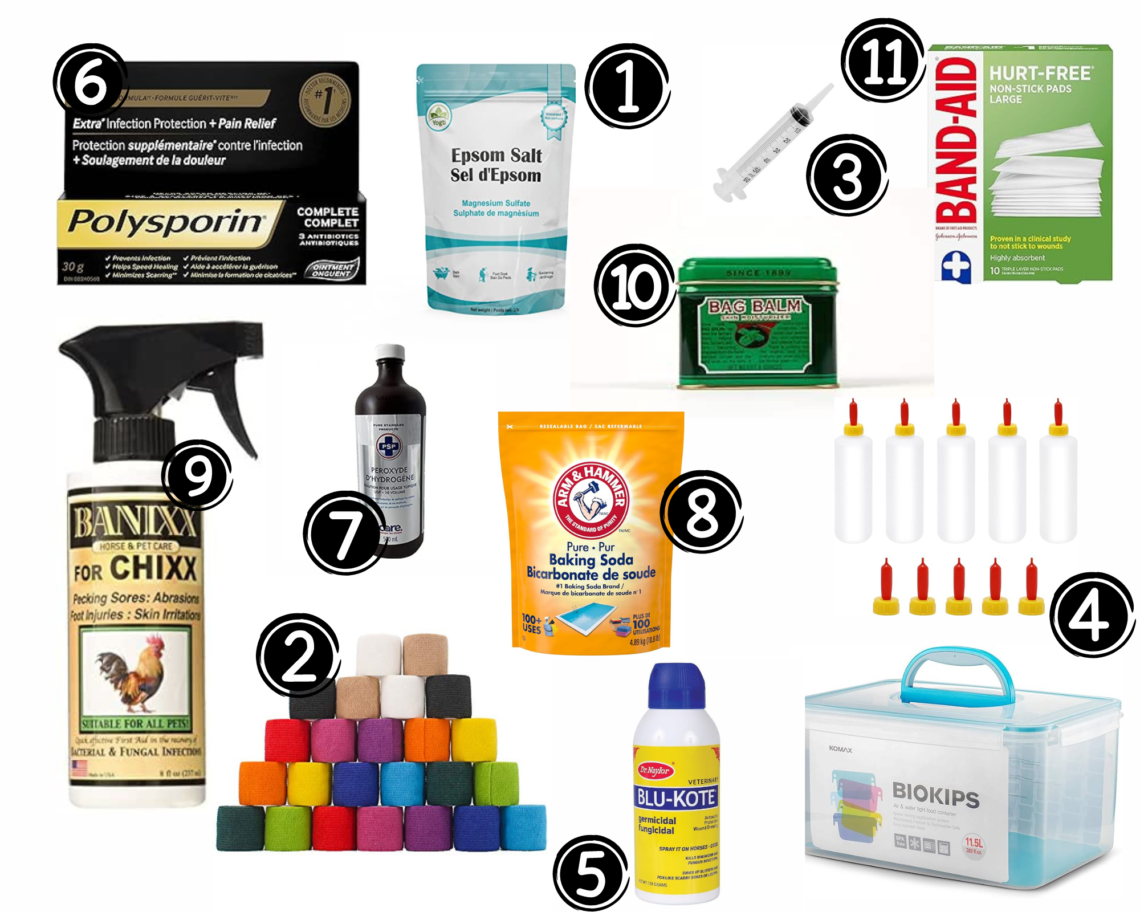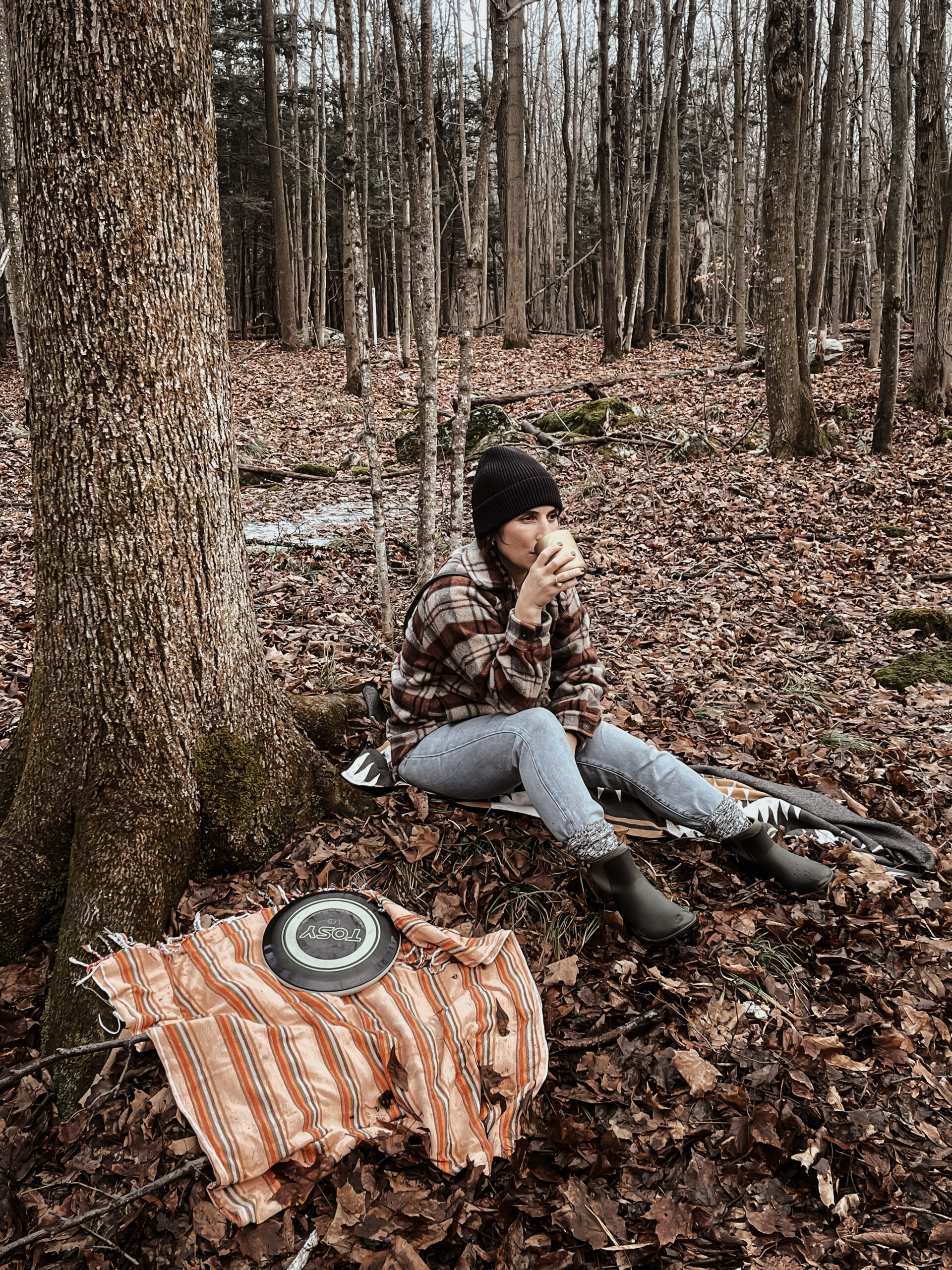
Stocking a Hobby Farm First-Aid Kit: What to Buy
If you’re keeping pets or livestock (or thinking about beginning to), one of the first things that needs to be in place is a first aid kit. Larger farms usually have this system tuned to perfection, as it can save them hundreds in unnecessary vet bills—not to mention that it might even save the life of your animal.
Having a well-stocked animal first aid kit is one of the smartest things you can do when it comes to maintaining the health of your animals on the farm, regardless of its size.
Here at Old Wood Hollow, I keep a sealed BioKips container in one of the metal lockers in the feed room. On any given day, you’ll find the following items in our first-aid kit (the link for our USA Amazon store is here):
Epsom Salt: I use Epsom salts for soaking. Not to be confused with table salt, they are commonly used for easing muscle pains and stress-relief. We use it at the barn as an anti-inflammatory, as it can help reduce swelling in horse’s legs and feet (think laminitis and abscesses, etc.).
Vet Wrap: I love this stuff. I keep a stock of it on-hand at the farm. Using cotton padding underneath, it can effectively control bleeding—it is also durable enough to use when wrapping horse hooves.
Syringes (without needles): I use these for administering medication, electrolytes or even yogurt. Sometimes a little pick me up is all the help an animal needs.
Baby animal bottles: We used these quite a bit when we were raising pigs and once when we played host to a surprise lamb. We would sterilize them via boiling and then prepare them with fresh bovine colostrum from one of the neighbouring dairy farms. I raised four piglets like this one summer!
Antiseptic Spray: I have this on hand at all times. In Canada, we can’t buy Blu-Kote online, so we by this version, which sprays RED. It’s not the best looking, but it serves the same purpose, keeping wounds from getting infected (chicken farmers are big fans of this spray, as it can stop other chickens from pecking each other). These sprays are usually available in silver, red, blue and purple.
Polysporin: Another must-have. We keep polysporin on the farm at all times. It’s great for cuts and mild burns for both animals and humans. I think this one is fairly self-explanatory.
Hydrogen Peroxide: This mild anti-septic is another staple here at the house and in the barn. While I use it to disinfect minor cuts, I also keep it in case we have any skunk run-ins. See our skunk-free recipe here.
Baking Soda: I keep both hydrogen peroxide and baking soda on hand in massive amounts as encounters with skunks are common (we have four very big dogs and a small dog that has boundary issues).
Bannix: We use this product quite a bit with the horses, given the amount of rain and dampness we’ve had. It works well for rain rot and ringworm, so it’s a definite must for the farm.
Bag Balm: I use this for surface cuts and scrapes on the horses. It helps them heal quickly while keeping the flies at bay. My dad kept it on hand when I was a kid, so there’s something nostalgic about it for me.
Absorbent pads: We like these ones by band-aid, for small manageable wounds. I place them under the vet wrap to absorb any bleeding.
Old Towels: Keep all your old towels! From bedding to cleaning, they have infinite uses on the farm, regardless of the kinds of animals you’re keeping.

Best Beginner Pets for Children
You May Also Like
Paleo Strawberry Rhubarb Crisp, the Healthier Version!
9 June 2022
